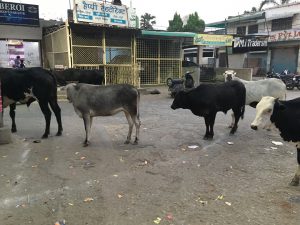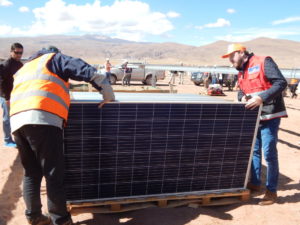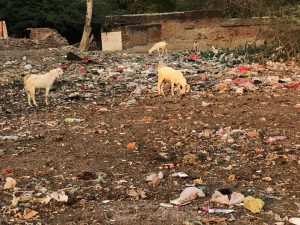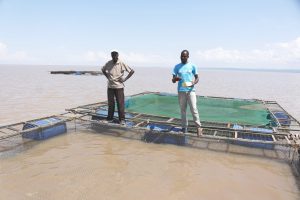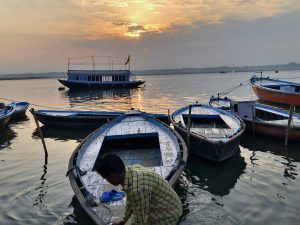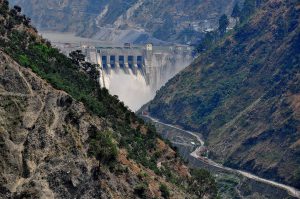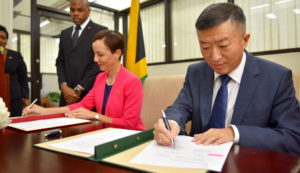This is part I of a two-piece series examining the manifestos of India’s main political parties on the issues of water and the environment.
Across India the maximum temperature is routinely crossing 35 degrees Celsius as the elections for the world’s largest democracy take place from April 11 to May 19. Little wonder that water is on every mind. The traditional slogan of developmental politics in India has been “Bijli, sadak aur paani” (electricity, roads and water), but in the face of an agricultural crisis, climate change, a massive population and increased pollution, water is now the first of these rather than the last.
In their manifestos, the Bharatiya Janata Party (BJP), which leads the incumbent coalition government, and the main opposition party, the Indian National Congress (INC), have both promised a super ministry that will unify water management if they win once the votes are counted on May 23.
In doing so, both have ignored that water is largely a state subject under India’s federal Constitution. With regional parties in the ascendant in various states, the next government may find that its powers on water management dependent more on persuasion than on Constitutional authority.
As expected, the BJP continued with its promise to interlink rivers throughout India, ignoring the dire warnings of experts, and the fact that various state governments had rejected the idea. It also promises to start a special programme “to ensure piped water for every household by 2024.” Its manifesto says it will ensure sustainability of water supply through “special focus on conservation of rural water bodies and groundwater recharge.”
Regional parties, such as the Dravida Munnetra Kazhagam in Tamil Nadu and the Trinamool Congress in West Bengal, have also promised piped water supply to every household, though they do not provide a deadline, like the BJP. These state parties have also promised to tackle groundwater contamination. About 85% of India’s arsenic-contaminated groundwater is in West Bengal.
As expected from a party in the opposition, the Indian National Congress (INC) manifesto starts with a criticism. “The allocation to the National Drinking Water Mission that has suffered neglect under the BJP government will be increased.”
The INC has a special focus on the Brahmaputra river in north-eastern India. “We will use modern technology to harness the waters of the Brahmaputra and to find a permanent solution to the problems of flood and soil erosion,” its manifesto says. “We will examine the opportunity provided by the mighty Brahmaputra to create a multi-modal transport system in the North Eastern region.”
For over five years now, water activists around the country have been demanding that local governments – municipalities and village Panchayats – should have the power to decide the fate of lakes, ponds, wells, streams and other water bodies within their area. The INC appears to have taken this on board to some extent. As part of its promise “to create a Ministry of Water to bring all water-related activities and departments under one authority,” the party’s manifesto says, “We will pay special attention to access to water and democratic sharing of water. We will address these issues by focusing on storage in dams and water bodies, replenishing groundwater and creating a large participatory programme of water management involving the state governments, civil society organisations, farmers, other users, Panchayats and Gram Sabhas.” The last are India’s elected village bodies.
The Communist Party of India – Marxist (CPI-M) has also promised to “recognise the peoples’ right to water” and to “oppose privatisation of water resources.” It wants water to be treated as a “scarce public good.”
Ganga – promises again
When politicians talk about water in India, yet another promise to clean the Ganga cannot be far behind. Prime Minister Narendra Modi represents the constituency of Varanasi in India’s Parliament, one of the holiest Hindu cities on the banks of the river. During his 2014 campaign, he had vowed to clean the river.
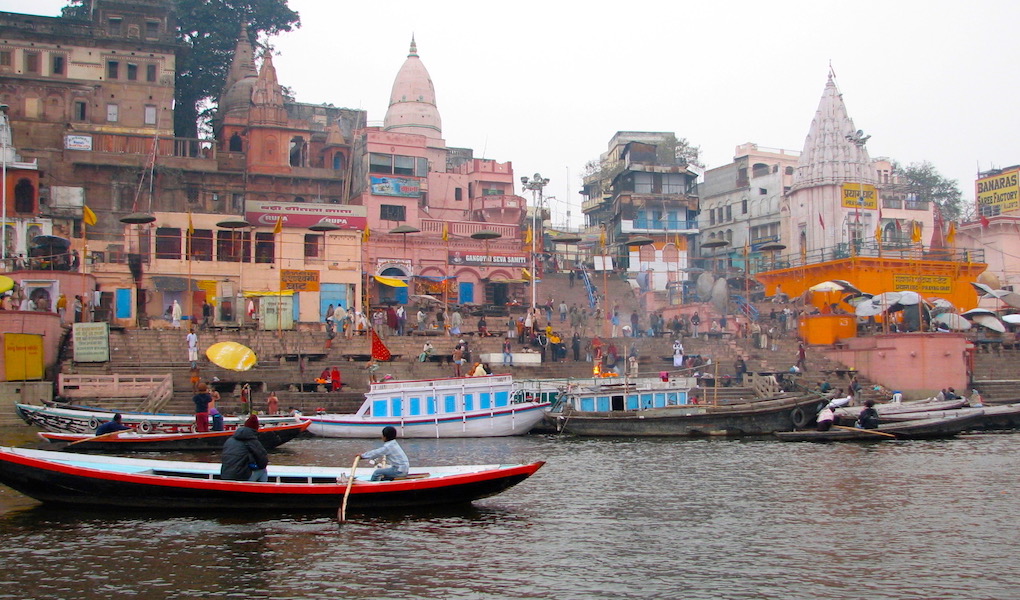
although there has been some cosmetic cleaning of the ghats in recent months [image by: Soumya Sarkar]
A highlight of the BJP manifesto is that its government will, “Achieve the goal of Clean Ganga by 2022.” How it will achieve this, given the shortage of water in the river, is unclear.
See: No water for a clean Ganga
The opposition INC, which had started the Ganga Action Plan when in power in 1983, now “promises to double the budget allocation for cleaning rivers, including the Ganga. Congress promises to review the current methodology for cleaning rivers and to strengthen efforts by employing the latest advances in science and technology. We will convert the Ganga Action Plan into a People’s Programme and implement the same.”
Perhaps realising that the BJP’s focus on cleaning the Ganga has not gone down well with voters living on the banks of other filthy rivers, the INC stated that it will, “join hands with state governments to stop, fully and finally, the discharge of effluents into the rivers and to clean all the rivers of India.”
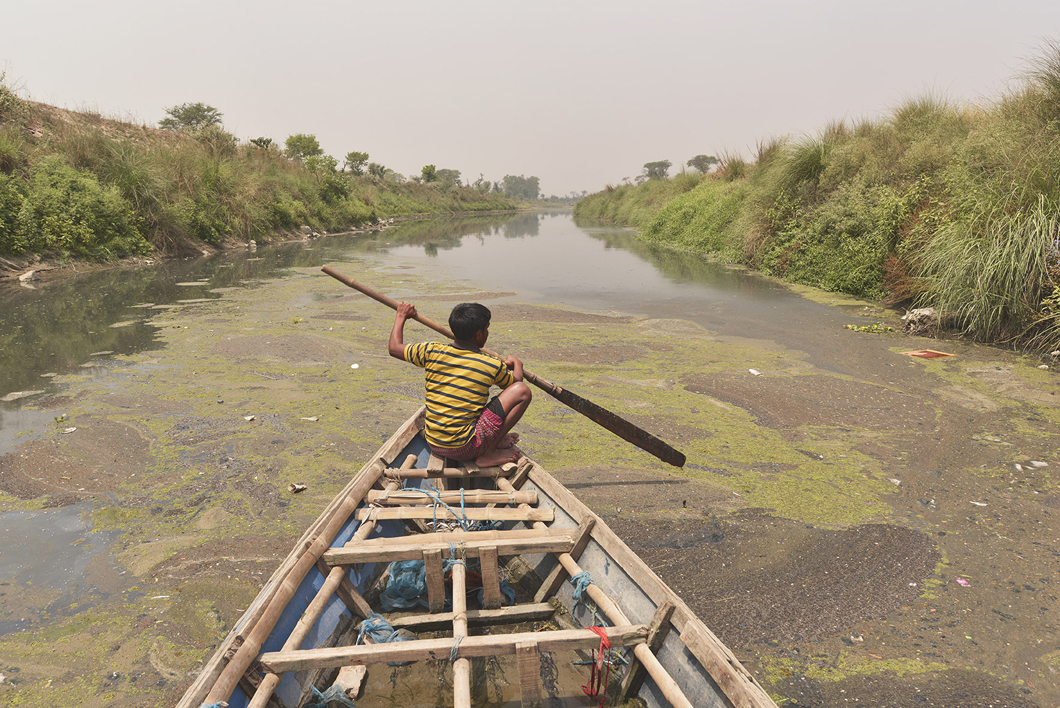
See: Sand mining is destroying Asia’s rivers
The Nationalist Congress Party (NCP), Communist Party of India-Marxist (CPI-M) and the Communist Party of India (CPI) have also emphasised the need to check pollution of rivers and other water bodies.
Many of the parties – including the Trinamool Congress and the NCP – promised to boost inland water transport, with the Trinamool Congress providing a list of rivers where it wants this done.
Clean India?
A flagship scheme of the BJP-led government in the last five years has been to reduce open defecation. Its 2019 manifesto says, “We have constructed over 9 crore (90 million) toilets under our flagship programme, Swachh Bharat Mission. We will take the Mission to a new level through sustainable Solid Waste Management in every village. Through the mission, we will ensure 100% disposal of liquid waste through emphasis on faecal sludge management and reuse of waste water in rural, peri urban and unsewered areas. We will ensure that all habitations attain open defecation free status and those that have attained the status sustain the behavioural change.”
The party seems to have recognised the big drawbacks of its scheme – many toilets have been built without water supply or a plan to dispose of waste. It now says, “We will ensure 100% disposal of liquid waste water and reuse of waste water.”
Before the BJP wrested power in 2014, the INC-led government had its own scheme to reduce open defecation. Its 2019 manifesto harks back to that, saying the “Congress will review and re-introduce the Nirmal Bharat Abhiyan (NBA) to ensure universal access to a clean, functioning toilet with water. Instead of chasing numbers, Congress promises that NBA will support the construction of individual toilets (that will be the responsibility of the household) as well as community toilets (that will be the responsibility of pre-qualified NGOs). We will implement a comprehensive plan for the treatment and safe disposal of sewage.”
In the area of solid waste management, the BJP promises to “get the latest technologies to transform Waste to Energy and Wealth in a major mission.”
The INC says, “We will impose a complete ban on the import of all types of waste. We will implement a solid waste management plan in every habitation, village, town and city employing modern technology and machinery. Those engaged in waste management and disposal will be assured appropriate equipment, dignity and safe working conditions.”
Water and agriculture – the missing link
Nowhere is the lack of new thinking on water more evident than when it comes to agriculture. Like most South Asian countries, the vast majority of water usage in India is dedicated to agriculture, over 80%. India also has the unpleasant distinction of hosting the most number of privately owned water pumps sucking out its groundwater. Uneven precipitation, due to climate change, as well as the destruction of wetlands and water bodies through unrestrained development, is making this problem more acute. More than half of India’s population is dependent on agriculture, or agriculture-linked jobs, and yet the agriculture sector is both inefficient in its use of water, as well as struggling to deal with increasing droughts and floods.
Without a comprehensive plan for agriculture, all of the plans to better manage water are likely to suffer, but there seems to be little appetite to approach this most pressing of issues. There is only the old promise by the BJP of increasing the area under irrigation, without any mention of how to make irrigation more efficient.
Read part II: Green promises for India’s polls, but no fresh idea
![<p>Bathing at the ghat in Varanasi [image by: Honza Soukup]</p>](https://dialogue.earth/content/uploads/2017/11/Bathing-in-the-Ganga-Honza-Soukup.jpg)

